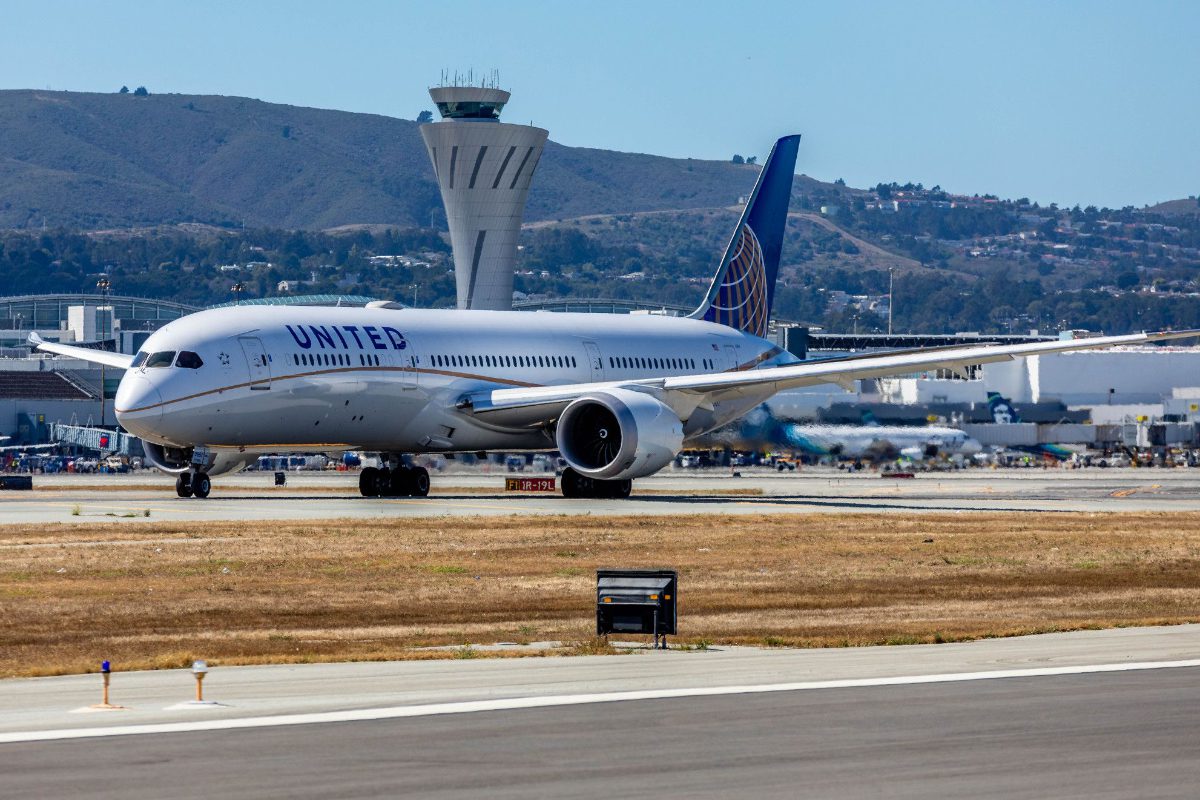United's 2022 Plan to Return to Pre-Pandemic Levels Tripped Up by Omicron

Skift Take
United Airlines' ambitious plans to fly more this year than it did in 2019, before the pandemic, ran into an obstacle named Omicron. Due to the spread of the coronavirus variant, the airline now expects to fly less than it did in 2019, with most of the hit coming in the first quarter.
During the first quarter, United expects capacity — an airline industry term that measures the total number of seats flown in available seat miles (ASMs) — to be down 16-18 percent from 2019, a reduction it did not see coming when it updated investors in October. The Omicron variant has hit United in two ways. First, passenger bookings began to drop in December and continued falling into January and February. Cancellations similarly spiked.
Second, the airline reported staff shortages during the holiday period, especially before the U.S. Centers for Disease Control and Protection (CDC) shortened its quarantine guidance from 10 days to five, a change actively sought by the airline industry. Despite this, CEO Scott Kirby noted that not one United employee has died during the Omicron surge — compared with roughly one employee death per week before vaccines became available — and none of its vaccinated employees have been hospitalized during this wave of the pandemic.
United, which has the strictest vaccine mandate in the U.S. airline industry, took flak last year for its policy requiring vaccines for all employees. But Kirby pointed out the policy's success. "Our vaccine requirement has truly saved lives," he said on the company's fourth-quarter and full-year earnings call Thursday.
The company is confident the Omicron surge will soon be behind it. Bookings for March travel have stabilized, and demand for transatlantic travel during the summer are strong and are exceeding 2019 levels, Chief Commercial Officer Andrew Nocella said. The recovery of United's East Asia and Southeast Asia network remains slow, due to travel restrictions in the region, but the carrier expects to rebuild its large presence in Japan and China eventually. More capacity is being added to Africa, India, and Middle East routes to offset the slower recovery in Asia.
But, like many of their peers, United's management believes Covid-19 is on its way to being an endemic disease, and the carrier is planning for that future. "We believe and certainly hope that as a company and society, we are moving into the endemic stage of Covid," Kirby said. "But we'll continue to manage as we have throughout the crisis and once again this quarter and be responsive to what actually happens instead of what we hope will happen."
Customer behavior has changed during the pandemic: Leisure travelers are booking tickets closer to their travel dates, behavior which before the pandemic was more typical of business travelers. But Nocella is encouraged by the trends. In the first week of January, bookings were 48 percent lower than in 2019, as travelers cancelled flights due to the Omicron surge. By the second week, bookings were down 40 percent, and by the third, 25 percent. The carrier expects trends to revert to normal by the middle of next month. "March looks normal," Nocella said. "There's a hole in January that we can't fill."
Airplanes and Pilots
One way that United will partially fill that hole is by bringing back 52 grounded Boeing 777s. Those aircraft have been grounded since last year, when the Federal Aviation Administration (FAA) required further inspections on the Pratt & Whitney engines' fan blades after a dramatic engine failure over Denver. (The majority of United's 777 fleet is not powered by Pratt & Whitney engines and were not affected.) The grounded aircraft represented about 10 percent of United's business, and are expected to start returning to the fleet in March, Nocella said.
United also is taking delivery of eight Boeing 787s this year, delayed from last year due to the FAA requiring Boeing to inspect their fuselages. And the carrier expects to take delivery of more than 50 Boeing 737 Max aircraft and plans to bring dozens of temporarily retired aircraft out of mothballs by the end of this year, later than originally planned.
The airline sees no difficulties in staffing those aircraft, despite the looming pilot shortage. United hired 1,200 pilots last year and expects to hire at a similar rate this year. In the next year or two, there could be fewer pilots coming from the regional carriers, but longer-term, United believes it can fulfill its pilot needs through its Aviate pilot-training program and through higher pay than offered at the regional airlines. "The big difference for us at the mainline is that at United, we create careers," Kirby said. "They're not just jobs."
But the regional airline pilot shortage has had an effect. The carrier has had to end service to more than 20 cities due to its regional partners not being able to operate those flights. "We are facing the pilot shortage on our regional aircraft, not on our mainline aircraft," Nocella said. "And we expect that pilot shortage to continue for a while, including for the rest of 2022; so we do expect, unfortunately, there will be a few more communities that we will have to remove from the network."
Concerns over the deployment of 5G wireless networks have largely faded, now that Verizon and AT&T have agreed to a further delay of the rollout around several airports. Although some regional aircraft have had to divert this week, most airlines are operating as planned. "I want to thank the White House, [Transportation] Secretary Pete Buttigieg, and the CEOs of AT&T and Verizon for finding and agreeing to an approach that mostly avoided what would have been severe disruption to passenger and cargo operations in this country," Kirby said.
"While I wish it happened earlier, the good news is we now have everyone engaged, the FAA and DOT at the highest levels, the equipment aircraft manufacturers, airlines and the telecoms," he added. "And I'm confident we'll soon have a clear set of objective criteria that allow full rollout of 5G without significant impact to aviation."
And Now, the Numbers
United reported a fourth-quarter net loss of $600 million, and a $2 billion net loss for the full year. Revenues in the fourth quarter were down 25 percent from the same period in 2019, to $8.2 billion. The carrier r expects first-quarter 2022 revenue to be 20-25 percent lower than the same period in 2019.
An area of continuing strength for United, with its large Asia network and ongoing logjams at ports and with surface transport, is cargo. Freight revenues were up 130 percent from 2019, to $727 million in the fourth quarter, a record for the airline. And for the full year, cargo revenues were up 100 percent from 2019, to $2.3 billion. "The supply chain disruptions, the backups at the ports, these things look likely to continue to some degree for the foreseeable future as we head into 2022," Nocella said. "So we're optimistic that cargo is going to have another great year."




